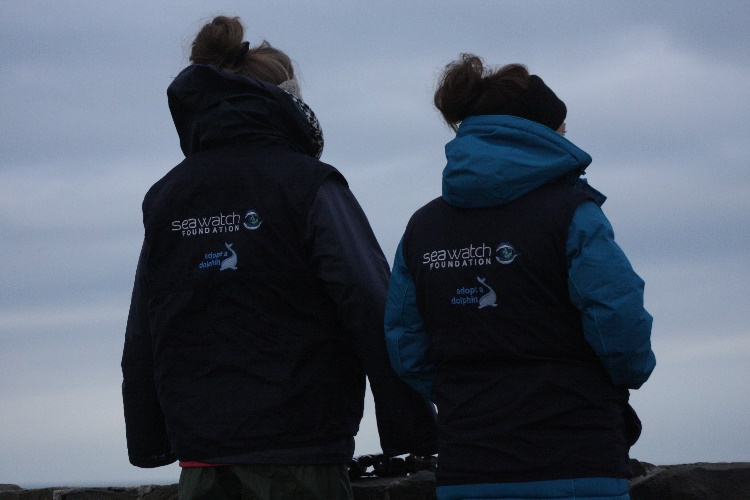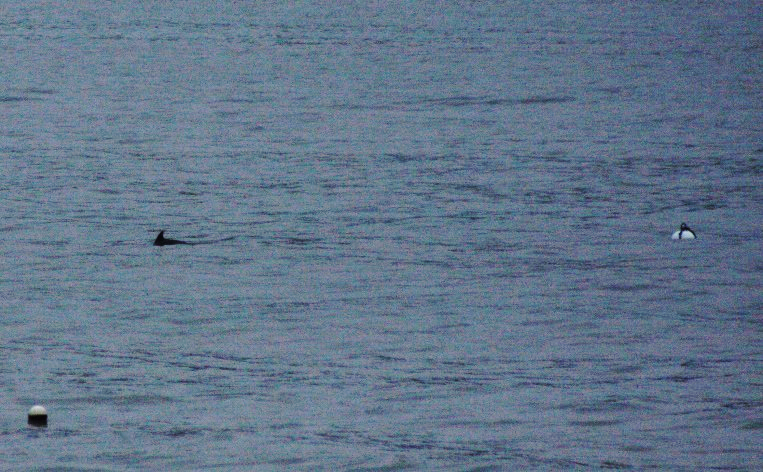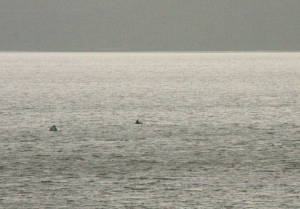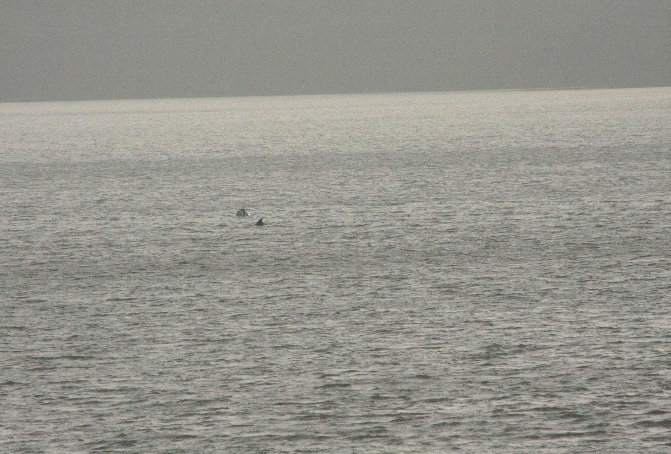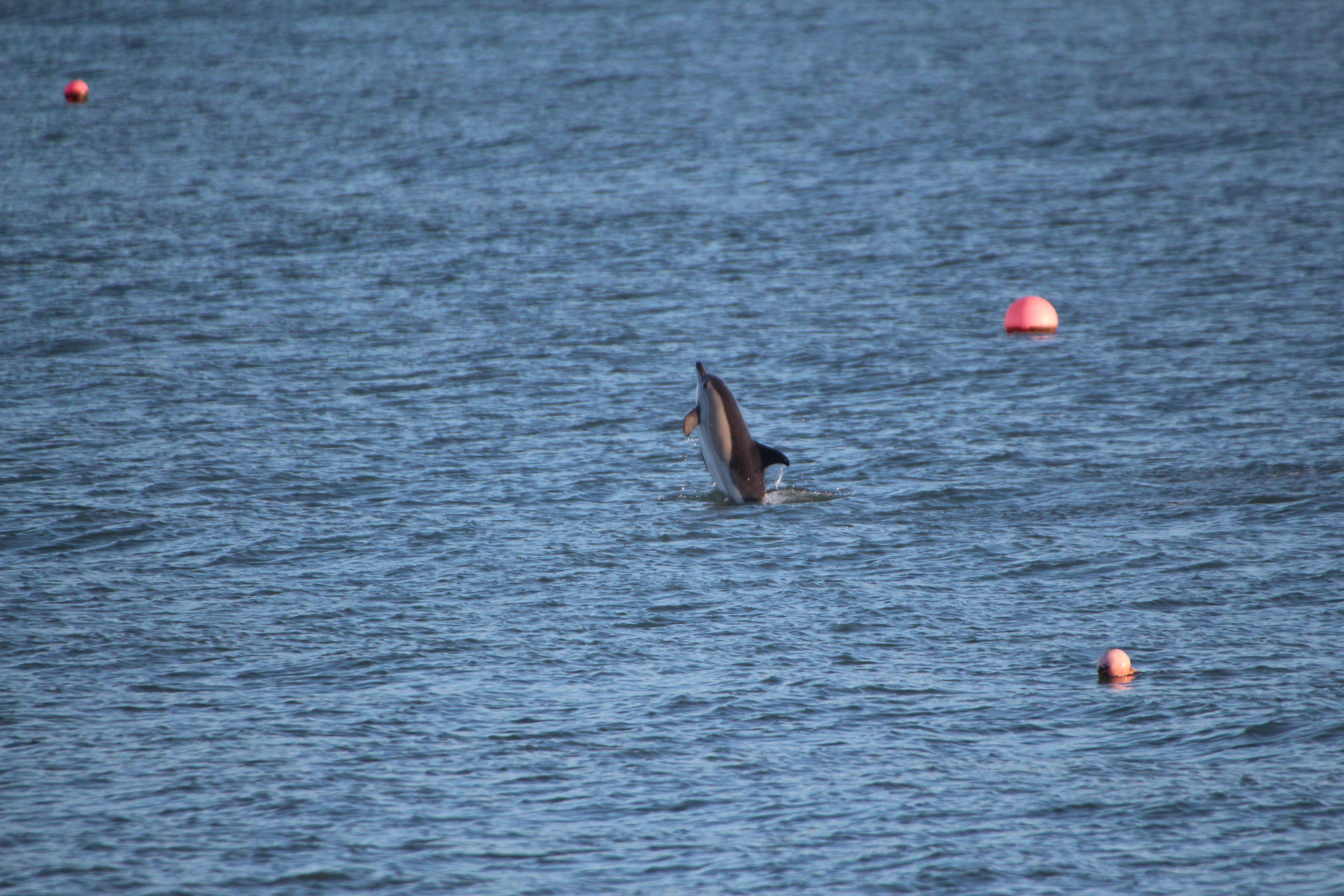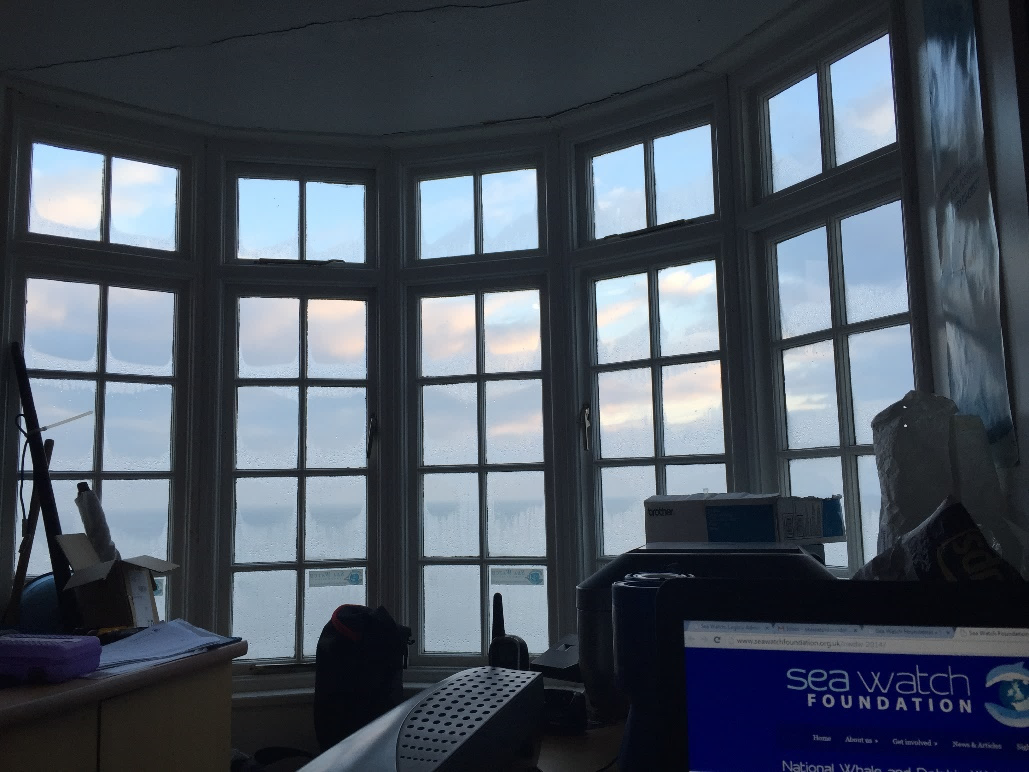Between January 19th and 30th, Sea Watch were joined in West Wales by Megan and Jen on their work experience from Sparsholt College. A common dolphin was reported in New Quay Bay way back on December 28th and had been reported most days since. Here’s Jen and Megan’s account of their first week Sea Watching and the trials and tribulations of species ID…
20/01/15- First day on the job. As you’d expect, two keen marine ecology students from Sparsholt, Winchester were pretty excited to be getting out on the pier for their first Land Based Effort Survey, especially after all the recent sightings of the semi resident bottlenose dolphins and the much rarer sighting of a lone common dolphin. We sat there with our binoculars watching every breaking wave turn into the shape of a breaching dolphin or every buoy turn into a dorsal fin, we started to go a bit mad. An hour into the survey and still not a peek, the wind was getting stronger and the cold was starting to find its way through the gaps in our clothes making the fact there were no sightings just that much more disheartening, but the slight possibility of seeing these dolphins was enough to keep us going through the two hour survey.
21/01/15 – In the offing. After a tough first day being battered by the harsh Northerly winds and not seeing a single thing, it was only fair that something would turn up today. We set up camp on the pier as we did the day before, binoculars at the ready. By sheer timing, a dorsal fin was spotted just breaking the water’s surface in the New Quay harbour, not quite the ground breaking leap you’d expect from a dolphin, but it was a dolphin nonetheless. For two hours we watched it circle the white buoy seen in the picture, showing nothing more than its dorsal fin, there was no way we could decide what species of dolphin it was, if only it would jump out of the water.
22/01/15 – Not one to assume.. ..but I think it’s safe to say it was the same dolphin that turned up the next day, swimming around the same buoy with the same surfacing pattern it seemed to enjoy teasing us with. There was still such little activity from the animal, as if he was determined to remain unidentified. Surely it was just a bottlenose seeing as they are so regular to the bay, but this individual was a lot smaller, only just bigger than the buoy its seemed to have gotten so attached too, and why would such a small/young bottlenose be on its own anyway? Could it be that the lone common dolphin has made itself comfortable in the harbour? Typically the dolphin still showed us no more than its dorsal fin, we needed to see its flanks!
23/01/15 – Tied to the buoy This dolphin runs like clockwork, its behaviour and timing is so consistent it’s like he’s physically attached to this white buoy that it constantly swims around, like he never leaves. What could it possibly be doing there every day, all day? A common dolphin was photographed just before we arrived at New Quay for our placement, and of course in the photos it was leaping out of the water showing off its creamy coloured flanks, but after staring at one of the photos of this common leaping out the water, we noticed the white buoy in the background, the same white buoy that our dolphin seems to love, it must be the same dolphin! Yet we still have no real proof.
25/01/15- Cuppa Conundrum By the end of the week we were still at a loss as to what species this dolphin was, we walked to New Quay on the Sunday in hope we could catch the dolphin off guard, after all it seems to know when we are watching it. We sat in the Penwig, a quaint little pub that faces onto New Quay harbour in perfect shot of our dolphin, where we could see it swimming round in circle like usual. After hours of discussion and countless cups of tea we decided that the mystery as to the species of this dolphin is better off unknown, for now…
Work hard, play hard! We have been working with the Sea Watch Foundation for a week and have already gained so many skills in the office that reflect what we hope to pursue in the future. Not only do we spend two hours every day doing a land watch, but we spend the rest of the day in the office practicing the more theory part of the job.
- We have learnt how to process the sightings that are uploaded by the public onto the Sea Watch website
- We have access to the emails where we can query any observer on what they have seen to verify their report. We also send thank you emails to those who have sent in their sightings to encourage them to continue doing this.
- Entered sheets of data that were filled out by people that have done land and boat-based surveys into a spreadsheet (this was whether they had just taken part in the effort as well as if they had any sightings).
- Collected donation pots from the local shops and counted the money that was accrued, then created a certificate of appreciation to give back to them
We would like to thank the Sea Watch Foundation for the opportunity to work with them giving us the experience and insight into what the organisation does and the kind of careers we hope to pursue.

